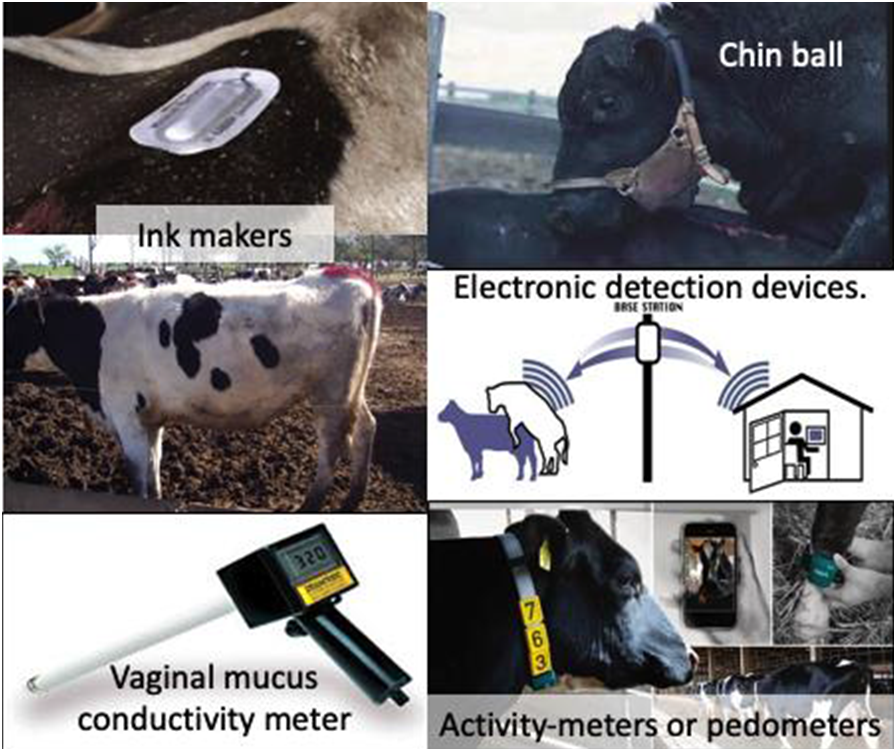The advanced methods of heat detection in animals are based on the molecular markers or specific instruments to record some parameters of the body to identify the animals in heat. These methods may be used in the field or at the farm while some may require to be tested at the certified laboratory.
The animal in heat shows decreased amounts of progesterone in the serum and milk. ELISA tests or kits are available and may be used to detect the animals in heat.
Pedometers are the devices that are attached to the legs of the animals to monitor their activity. As stated above, the animals in the heat show signs of restlessness and these devices monitor the activity of the animals and the animals showing more than average activity will indicate the possibility of the animal in heat.
To record the increased activity of the animal under heat, neck collars or tags are also used like a pedometer. The tag sends a signal via radio frequency to the main processor which does the analysis and sends a signal whether the animal is in heat or not. In case of pregnant animals, the tag is removed and placed on another animal.
The animal herd movement is observed under the CCTV and animals may be scanned for the signs of heat. The recordings of CCTVs may be viewed later on for the identification of the animals under heat. CCTV with infra-red vision helps in identification of animals showing signs of heat at night.

Heat detection aids (Jose Armando Garcia Buitrago, Teaching Notes on Dairy Production. New Mexico State University.)
Show Heat is a mounting detection system and functions with a light system which gets activated when the cow is mounted three times. The light flashes in a series of 12 seconds. The animal is considered to be in standing heat for a period of 2 hours after flashing of light and 2 hours are added for further flashing till the 18 hours. The system is more useful in predicting the optimum time of insemination.
The animals with tag or identification systems may be observed by CCTV or activity may be recorded by using a suitable system and the animals showing signs of heat will be recorded by the computer system. Analysis of the data by advanced software developed by machine learning principles will help in finding the animals in heat. The information generated, about the animals under heat, may be provided to farmers or owners of dairy farms even on the mobile app.
The voice pattern and rate of animals also shows whether the animal is under heat. It is also a part of the artificial intelligence system. The voice pattern in animals can be recorded and processed by the software developed under an artificial intelligence system automatically to identify the animal in heat. This system may be used in combination with other systems to predict the estrus stage of animals more accurately.
New markers of estrus detection like protein, mRNA, miRNA etc. have been identified in the urine, saliva, and blood or serum of animals in heat by different scientists. Such markers may be used to develop kits to identify cattle and buffaloes in heat in future. Recently, changing microbial populations during estrus has also been reported as a marker of estrus in buffaloes.
Timely detection of estrus in animals will help in increasing the fertility of animals and income of farmers. Detection of estrus in buffaloes is very difficult as compared to other animals due to the weak signs of heat. But the combination of conventional methods with advanced methods may help in identifying the animals in estrus more efficiently and such animals may be inseminated timely.